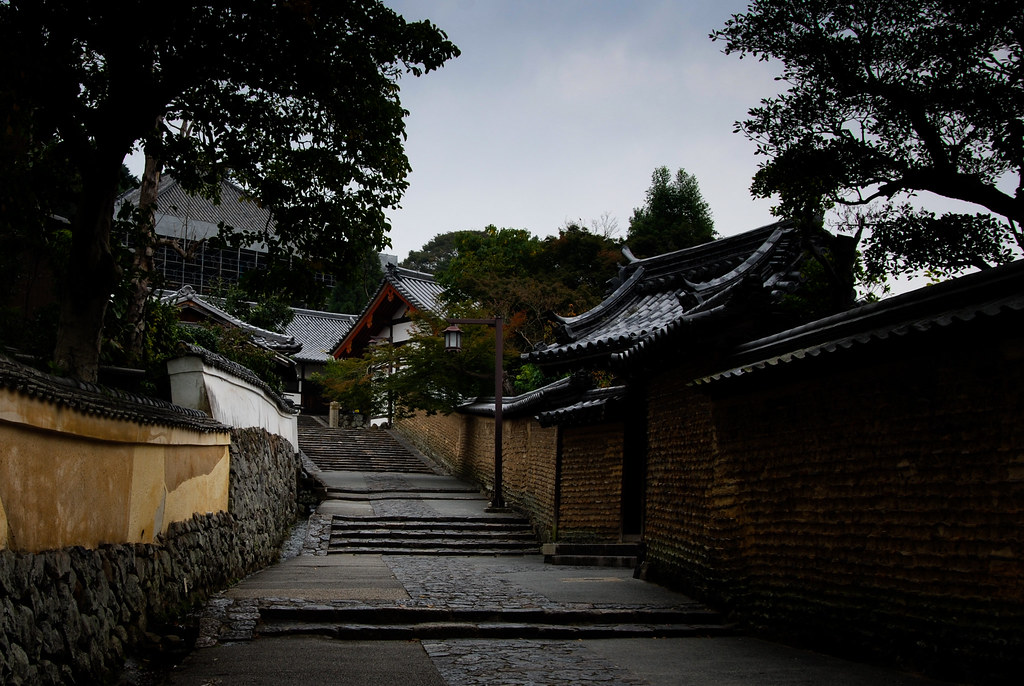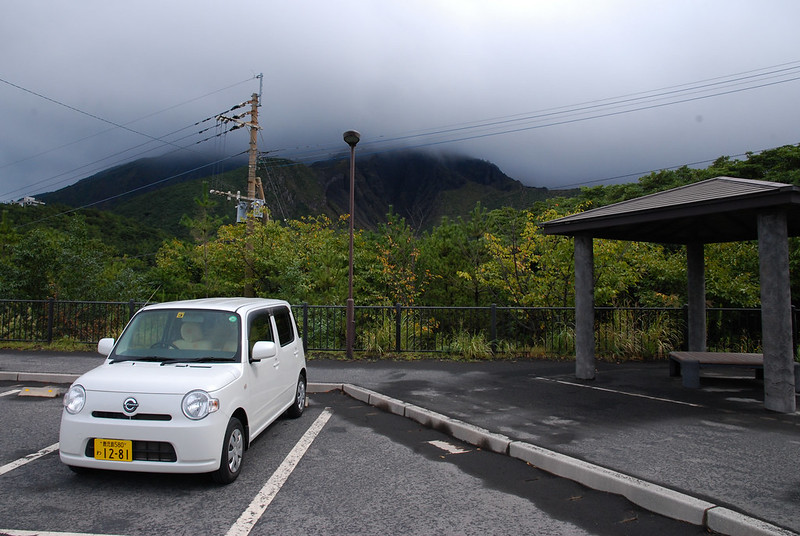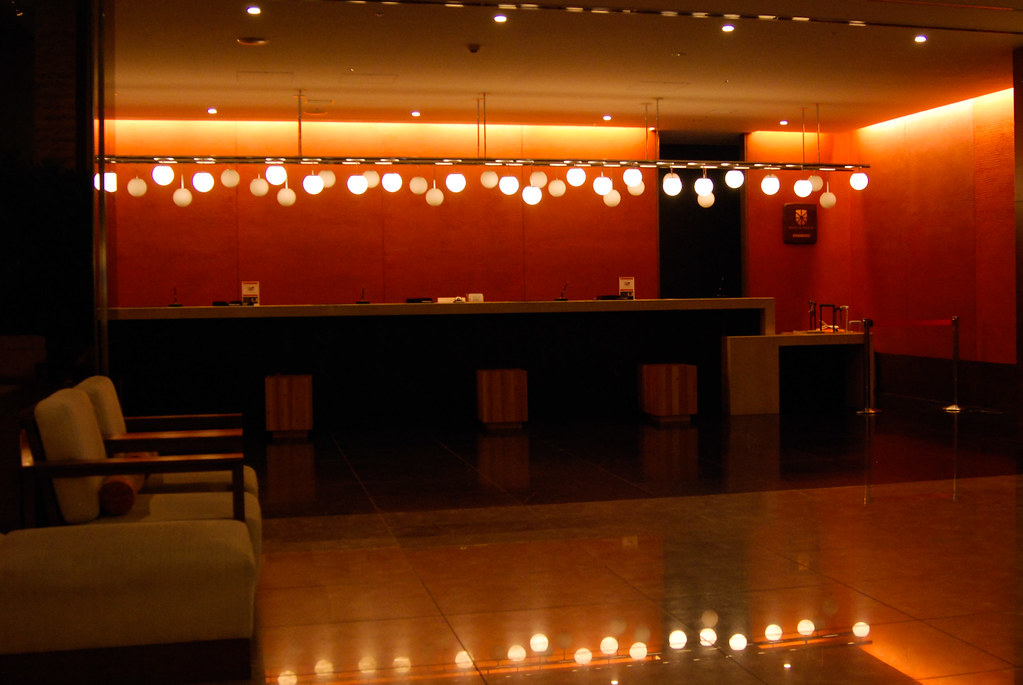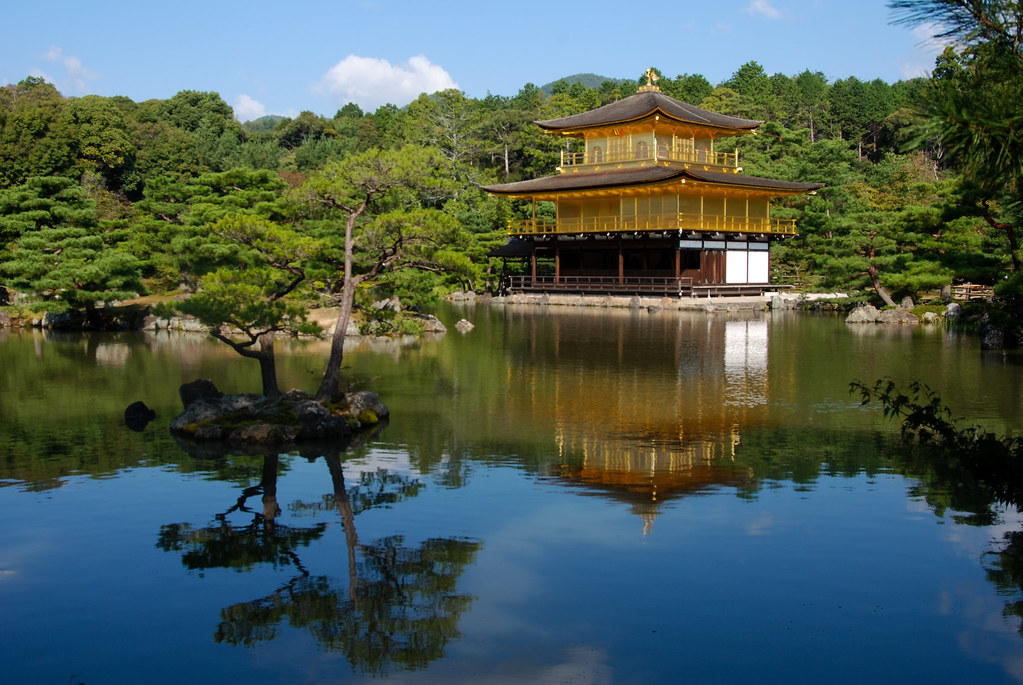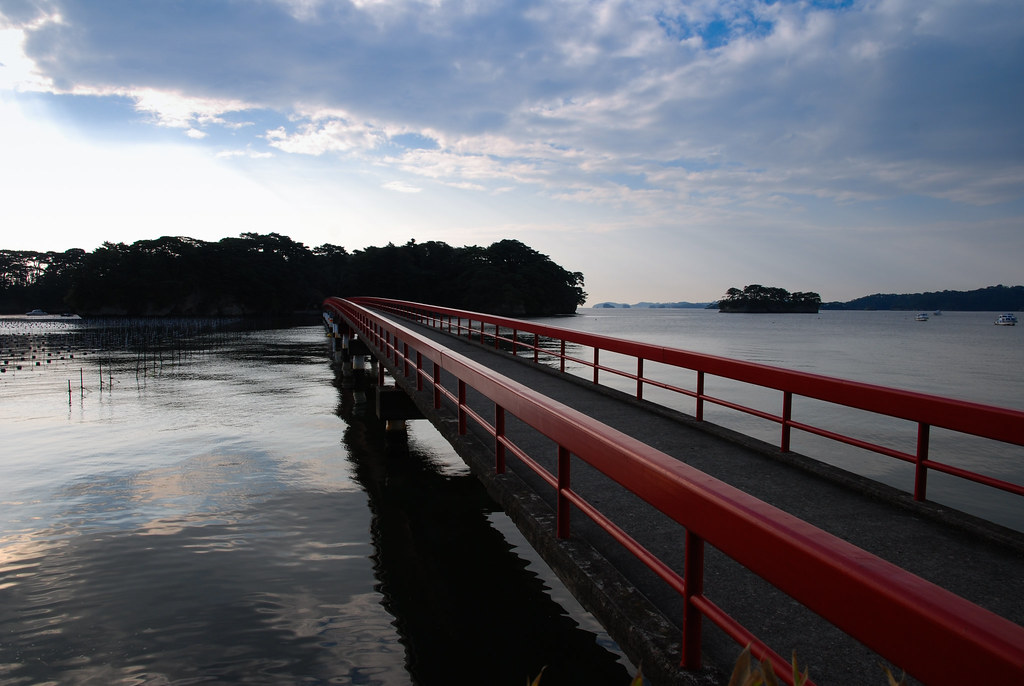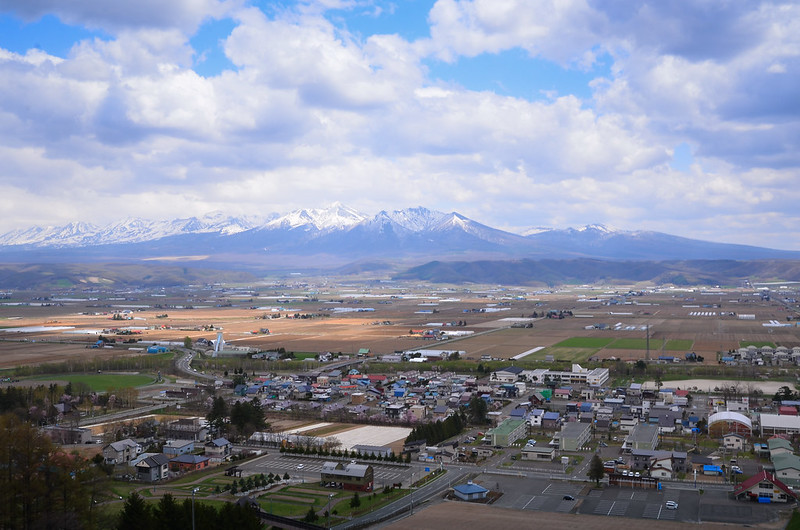Nara, Japan
One of my hobbies is learning Japanese, and I try to visit as often as I can, but travel in Japan can be very expensive. With that in mind, I’ve compiled a load of information on how to visit Japan without spending a fortune – how to travel, places to stay, things to eat, and so on.
Over time, the key information began to get spread out over multiple posts, so I’ve collected the key how-to information here. Below (click here) you’ll find detailed links to individual cities and areas, covering most of Honshu and Kyushu – in most cases these include sights, food, accommodation and travel tips. Before that, tips for travel, hotels and the like.
Flying In
Fushimi Inari-Taisha, nr. Kyoto
I live in the UK, so any trip to Japan is a fairly long-haul. Economy fares from London to Narita (Tokyo) can easily top £1500, but I’ve found that a bit of careful shopping around can get you there for about £500 – the cost is mostly dependent on the time of year, and booking well in advance can often net you a sub-£600 ticket. For Heathrow to Narita, I normally fly Virgin Atlantic or ANA – if possible get an ANA flight on a cheaper Virgin codeshare ticket. For Kyushu, I found the best deal was Korean Air, via Seoul (great planes, too). JAL are fine, but rather like BA – a bit pricey, a bit dated. In 2014, Lufthansa was offering some excellent deals on London to Haneda via Munich – I paid around £450.
Getting Around – Trains
One of the many Shinkansen trains
BUY A RAIL PASS. Seriously. Train travel in Japan is, if you’re used to the European system, mindbendingly fantastic: the trains are staggeringly reliable and so punctual that if your Japanese is shaky you can safely work out which stop to get off at by noting the time the train should arrive there. However, they’re not cheap: local trains cost a few pounds, but you pay more on top for a Tokkyu express, which you’ll want if moving between towns, and even more for a Shinkansen ticket. In some cases one single trip will cost more than a multi-day pass.
So, about those passes: Japan Rail Pass tickets are only available to foreigners, and for strictly limited times. They entitle you to travel on just about* any train operated by the Japan Rail (JR) companies, plus a handful of ferries owned by JR. With a pass you can simply walk onto any train with non-reserved seating (listen for ‘jyuuseki’ in announcements), but also reserve seats on Tokkyu and Shinkansen services, free.
An all-Japan pass is available for 7, 14 or 21 days – details here. This must be purchased outside Japan before you travel. If you’re sticking to a smaller area, though, look for the far cheaper local passes: JR East (details) covers Tohoku, while JR Kyushu (details) offers both all-Kyushu and north-Kyushu tickets.
Booking train tickets far in advance is normally not necessary – if you’re picking up a rail pass, you should be able to get any long distance tickets you need on the same day. But if you really have to – like when I accidentally crashed into the middle of the Golden Week holiday – it is possible to book train tickets from outside Japan. But it’s complicated. See my guide, “Booking Japanese train tickets from outside Japan“, for details.
* A handful of the very fastest Shinkansen are exempt from the all-Japan pass, and you pay a surcharge for sleeper trains
Getting Around – Cars
I drove this up a volcano. Seemed like a good idea.
A JR rail pass will get you a very, very long way, and to most of the country – but sometimes there’s more to see further from the tracks. If you can drive, car hire in Japan isn’t hugely expensive: a tiny kei-car will normally run to around 5,000 yen for a day. You will, however, need a suitable license: in the UK this means a valid license, plus an International Driving Permit (1949 version). Don’t try to bluff it without one; the international permit will be instantly recognised but a EU-style license is not.
When it comes to booking cars, the web will be mostly useless: unless you have a Japanese address and you’re absolutely fluent, the websites of the major Japanese rental companies are of no use. What’s more, many list ‘branches’ that have no cars unless you’ve pre-booked – you need to phone ahead, and well in advance (the day before, in my experience, won’t work). I’ve had much more luck with the rental shops operated by car manufacturers (Toyota Rental, in particular), which tend to be slightly out of town but have a car-park full of vehicles ready to go.
Most rental cars in Japan have a powerful satellite navigation system, but these can be really hard to use unless either 1) your kanji reading skills are great, or 2) you can switch it into English. I’ve found that the Toyota Vitz tends to be the smallest, cheapest car with an English-language option. If you’re renting a kei-car, look for an icon with a phone: tap this, then tap in the phone number of your destination.
And speaking of language issues, it’s worth noting that a bit of Japanese goes a long way when renting cars. You could probably do it via sign language and luck, but it’d be tricky.
Getting Around – Domestic Flights
If you’re heading to Hokkaido or Kyushu (Hokkaido in particular) it might be easier to land in Tokyo then catch a domestic flight. There are dozens of flights each day from Tokyo to Sapporo, for example, and I took one to Hakodate. Most domestic flights leave Tokyo from Haneda’s excellent, and huge, domestic terminals – a short hop on the Tokyo Monorail from the international terminal.
The biggest carriers are JAL and ANA. You can buy either through some of the big English-language online flight booking services, but I found it was far cheaper to buy direct from ANA and pay in yen – I got an advance fare far lower than the full rate being offered elsewhere. In order to do this ANA does require a Japanese phone number; I use the Hushed app to get a temporary one on my iPhone. Booking an ANA flight direct is a two stage process: first book, then pay – don’t forget to do the latter, obviously. At the end you get a printable boarding pass.
Besides those two airlines, Japan now has some low cost carriers. Peach and Jetstar have English-language websites. Hokkaido is also served by the not particularly cheap Air Do.
Getting Some Sleep: Hotels
The Sunroute Plaza Shinjuku
There are plenty of ways to get a relatively cheap night’s sleep in Japanese cities. In various places I’ve stopped in ryokan, minshuku, hostels and more (I’ve not had to resort to sleeping in a manga cafe – yet – but it’ll probably happen), but in most cases the easy and cheap option is a business hotel. These tend to cost £30-45 a night, but are usually alarmingly clean and well kitted out. I’d recommend the following chains:
Sunroute – I used a load of these in 2011 and 2009, too. Classic business hotel service, with prices between £45 in the sticks and £110 in Tokyo. The price is always representative of what you get: the Plaza Shinjuku, for example, is expensive but flashy, while Higashi-Shinkuki is older and less smart but cheaper, and Nara costs almost nothing but is a bit knackered. You can reserve online via the website without putting any payment down in advance – in English, if you wish.
The B – These are very similar to the posh Sunroute hotels. Slightly trendy design, but otherwise just a clean, decent hotel. The Hakata one had a free coffee machine in reception and you can easily book online.
JAL City – These aren’t quite normal business hotels – you pay on checkout and there are minibars in the rooms, although in practice that just means you pay more for a beer or bottle of water. They are, however, really nice for the money – usually £50 or so if you book in advance. The website is a disaster that’s pretty hard to understand (a million and one options), so reserve on the phone or through a third party site.
JR Hotel – If JAL can have a hotel chain, so can the train company. I stayed in the one in Kumamoto, and it was just fine – absolutely standard business hotel service, right by the station, and cheap.
Toyoko Inn – You cannot miss the Toyoko inn in any town: it’ll be right by the JR train station, or have a giant blue light on the top, or usually both. And it’ll be cheap: £35-40. I’ve only stayed in one, which was a little worn, but fine for the money.
Dormy Inn – I’ve stayed in a few of these in Hokkaido. They’re a little more expensive (£70-£80) than your average Sunroute, probably twice the price of the Toyoko Inn, but occasionally you can grab a cheap room. In my experience they had decent rooms, free coffee in reception, onsen-style baths (the Dormy Inn Annex in Sapporo, in particular, was really quite nice in this respect), and free ramen if you happen to be kicking around the hotel at around 9pm. Online booking is possible via Japanican (see below).
If all these chains fail and you can’t see a decent looking independent, there’s always japanican.com – this agent allows English-language booking of a fairly wide range of hotels and ryokans. Oh, and a final word of advice: the Super Hotel chain is not super.
Getting Some Sleep: Youth Hostels
I’m not particularly young, and a bit too grumpy for hostel-hopping, but on a few occasions I’ve stopped overnight in youth hostels in Japan that have been recommended to me. Both Aso Base (Aso, Kyushu) and Furano Youth Hostel (Furano, Hokkaido) are really excellent places to stay, and I’d recommend them without hesitation.
Getting Online
Almost all hotels in Japan have fast, free internet access – but via cable, not wifi. So, if you want to get online, you’ll need a laptop with an Ethernet port. Wifi is finally appearing, but in most cases it’s provided by a Japanese phone network for its customers only.
[Update from May 2014 – Wifi seems to finally be arriving! The Dormy Inn hotels in Hokkaido, plus a few others, had good quality free Wifi internet access.]
If you have a smartphone with 3G, though, you can get online. To do this, buy a B-Mobile temporary visitor SIM card online – a 14 day one costs around £35 if purchased from outside Japan, and you can simply request delivery to your first location in Japan. It connects to 3G only – no voice or SMS services, but iMessage works – on the NTT DoCoMo network, which has good coverage. The service speed is limited, but good enough for email, web and occasional Google Maps.
A warning, for iPhone users though: on switching SIM cards my iPhone 4S reset and required re-registration via WiFi. Thanks, Apple.
Area Guides: Tokyo, Kansai, Hiroshima
The Kinkaku-ji, Kyoto
I visited the Kansai area in 2011, starting in Tokyo and traveling as far as Hiroshima. I wrote guides to:
Visiting Tokyo – getting into the Imperial Palace, cheap tickets for baseball matches at the dome, and Tokyo’s strange Disneyland-meets-Edo-Onsen. Plus, ten things not to miss in and around Tokyo, including how to get into the Ghibli museum and how to get out to Hakone.
Visiting Kyoto – temples, temples, temples. Plus the subway system, the Fushimi Inari-taisha, manga museum, and more
Northern Kansai – off the beaten track into Fukuchiyama, plus the beautiful onsen and cheap seafood of Kinosaki.
Visiting Hiroshima and Miyajima – the museums, the okonomiyaki, and hiking the amazingly beautiful island of Miyajima
Nara and (briefly) Yokohama – the daibutsu-den, deer, and, er, a German beer festival
Area Guides: Tohoku
Matsushima
I visited Tohoku in October 2012, traveling up to Aomori and back, via Fukushima-ken and Tazawako. I’ve added guides to:
Sendai, Yamadera, Matsushima and Hiraizumi – all the key places to visit in central Tohoku
Tazawako and Nyuto Onsen – including how to get around the lake, visiting Tsuru-no-Yu onsen
Hirosaki and Aomori – the Hakkoda Maru, and apples with everything
Aizuwakamatsu and Fukushima-ken – a beautiful part of the country that needs tourists to return
Area Guides: Kyushu
Aoshima, Kyushu
I visited Kyushu in late 2013, arriving in Fukuoka via Korea, and circling around the island to visit most of the major cities. I’ve written guides to:
Fukuoka – tonkotsu ramen capital of the world, plus Dazaifu
Nagasaki and Shimabara – the bomb memorials, Dejima, and the Shimabara peninsular
Kumamoto – home of a stunning castle and the famous Kumamon
Kagoshima and Sakurajima – beautiful views and open air onsen on an active volcano
Miyazaki and Aoshima – a stunning little island just off the coast and a cheap onsen hotel
Beppu and Aso-San – a quick stop in this busy onsen town, then around Japan’s largest volcano
Note- Rachel H also visited the Beppu area, and did a much better job than me of looking around – see her post here.
Area Guides: Hokkaido
Naka-Furano, Hokkaido
I visited Hokkaido briefly in May 2014 (during Golden Week, which was a mistake), and managed to cover most of the West and centre of the island. I’m hoping to go back to check out the Eastern side during winter (you can see the drift ice, apparently). But in Spring, I visited:
Hakodate – on the southern coast, a beautiful city with Russian Orthodox influences
Toyako Onsen – a lakeside onsen resort, with some good day hikes and sobering volcano damage
Sapporo – the hub of Hokkaido, with some beautiful parls (and did I mention the beer?)
Otaru – western style architecture, canals, and lots of tourism. And more beer.
Furano and Biei – in the heart of Hokkaido (or rather, its belly-button), two stunning countryside towns
The Dai-Kannon of Ashibetsu – visiting the world’s 10th largest statue, now mostly abandoned
Sapporo to Ueno on the Hokutosei -why fly back to Tokyo when you can spend 16 hours on a sleeper train?
